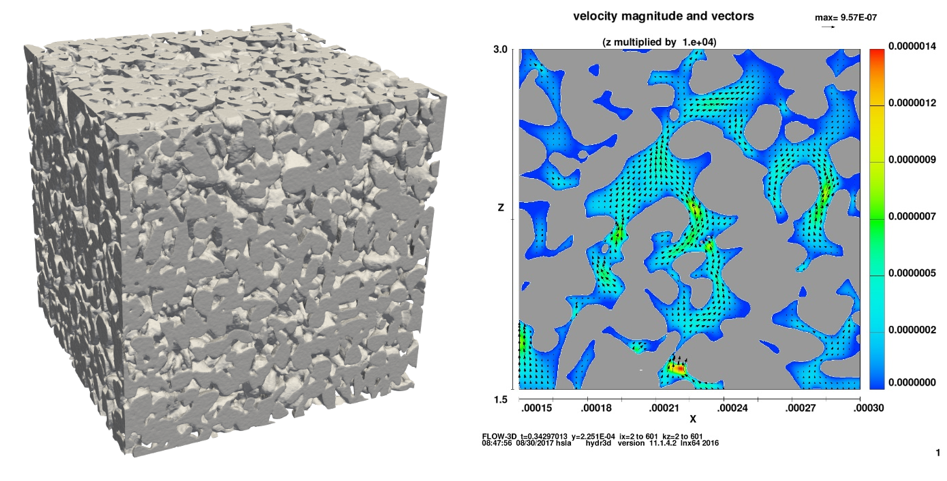Application of porous ceramics for phase separation in spacecrafts
Fluid handling in spacecrafts with ballistic phases is particularly challenging due to the lack of gravity. Porous materials can be used for phase separation of liquid and gas. Wetting liquids imbibe into the porous structure due to the capillary pressure. Once saturated, gas can only penetrate if the bubble point is exceeded. This particular behavior can be used to design components for the gas free removal of liquid from a partly filled container without the help of the hydrostatic pressure. Computational fluid dynamic tools are used to simulate two-phase flows on the sample scale, usually several millimeter to centimeters, and on the pore scale down to micrometers. Real porous samples can be scanned using x-ray tomography and converted into machine-readable files for meshing and modelling (Fig. 1) (with P03/03, P04/03, and P09/03). Simulations on the pore scale reveal properties of the porous media, such as the equivalent pore diameter and the permeability (Fig. 2). Simulations on the sample scale use these volume-averaged quantities to predict the functionality (with P06/03, P07/03, P08/03). Tests with terrestrial gravity and compensated gravity (in the drop tower Bremen) will provide data for comparison. The porous ceramic samples will be developed and manufactured by the advanced ceramics group (with P02/03). The process parameter of the production process can be adapted to achieve the desired pore size distribution and connectivity of the pores. The components will be near their final shape, reducing further machining steps. Porous materials offer several advantages compared to the metallic meshes used nowadays. The overall roadmap of the project is to design ceramic samples with regard to their pore structure, to predict the fluid behavior, to test the samples in different gravity conditions, and to improve the design with regard to possible applications.

Fig. 1 (left): Reconstruction of a porous sample from x-ray tomography data to be used in computational fluid dynamics, Fig. 2 (right): Numerical simulation of single phase flow at the pore scale in a real porous structure, achieved from x-ray tomography
Publications within MIMEMIMA:
Y. Grebenyuk, H. X. Zhang, M. Wilhelm, K. Rezwan, M. Dreyer: Wicking into porous polymer-derived ceramic monoliths fabricated by freeze-casting, Journal of the European Ceramic Society, Volume 37, Issue 5, May 2017, pages 1993-2000, http://dx.doi.org/10.1016/j.jeurceramsoc.2016.11.049.
Y. Grebenyuk, M. Dreyer: Wicking of liquid nitrogen into superheated porous structures, Cryogenics, Volume 78, 2016, pages 27-39, http://dx.doi.org/10.1016/j.cryogenics.2016.05.008


